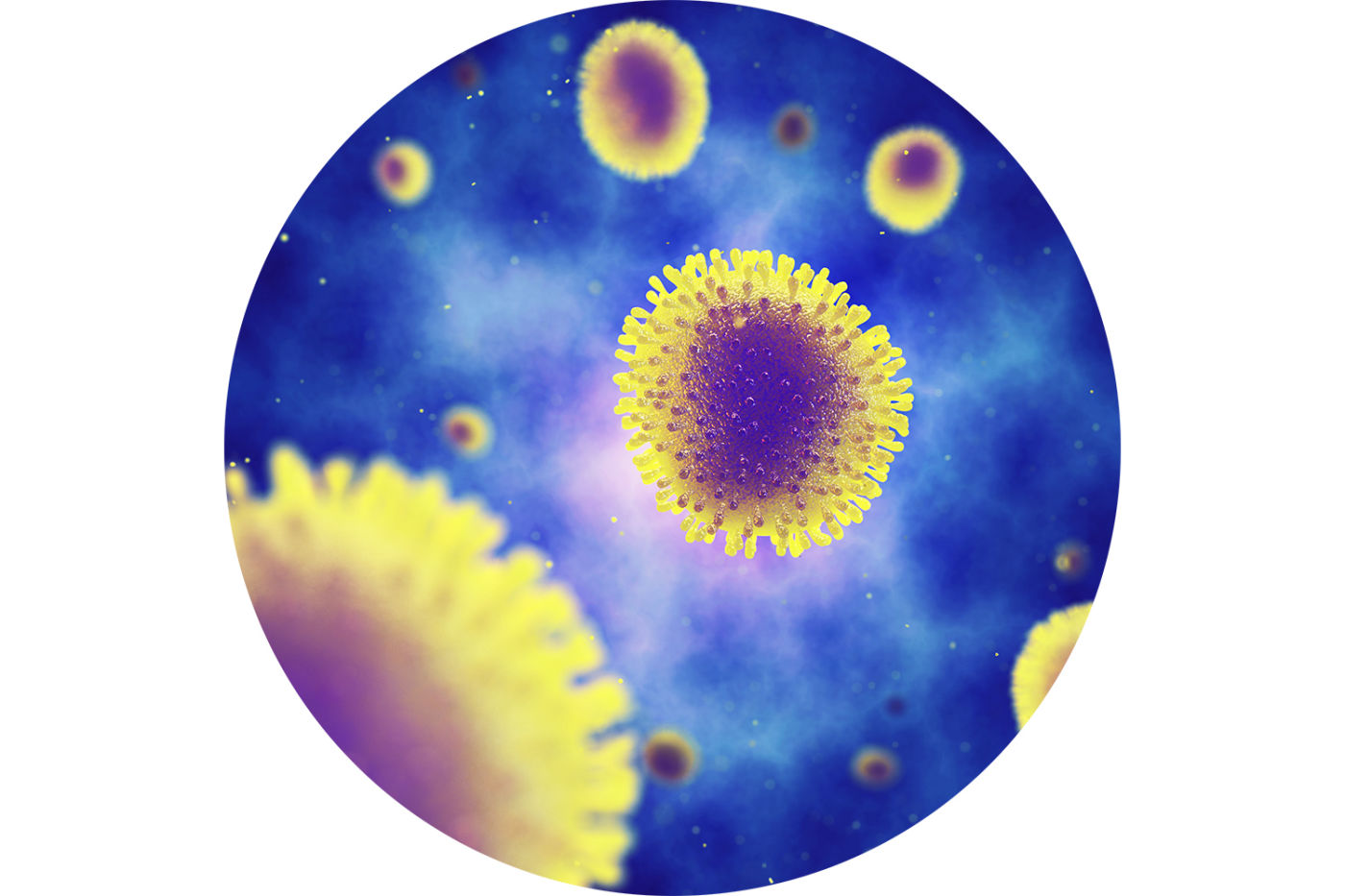
(RIF. RNA 01)
Influenza viruses belong to the Orthomyxoviridae family and are divided into three different types: type A, B and C based on the characteristics of their surface proteins. Type A virus is essentially an avian virus, which only occasionally adapts to humans and can cause pandemics. Type B and C viruses infect humans only:
virus B is responsible for small outbreaks on a local scale while type C causes a very mild disease. Influenza is a public health problem with a considerable epidemiological, clinical and economic impact. This is attributable to several factors: the ubiquity and contagiousness of the disease, the antigenic variability of the viruses, the epidemic (and periodically pandemic) and seasonal trend, the possibility of serious complications in some categories of subjects (children, the elderly, people with comorbidities and chronic diseases), management costs in case of complications and social costs (lost working days, loss of productivity, etc.). Flu is an acute respiratory disease caused by flu viruses. It is a seasonal disease that occurs in the western hemisphere during the winter. The first isolation in humans dates back to 1933 in England (but previously influenza viruses have been isolated in both chickens and pigs). Since then, four different types have been identified, all belonging to the Orthomixoviridae family: types A and B, responsible for classical flu symptoms; type C, of little clinical relevance (generally asymptomatic); type D, whose possibility of infecting humans is not yet clear. Influenza A viruses are further subdivided into subtypes based on molecular differences in the two surface glycoproteins hemagglutinin (HA) and neuraminidase (NA).
At the basis of the epidemiology of influenza there is the marked tendency of influenza viruses to change, that is to present antigenic variations in the two glycoproteins HA and NA which allow them to evade the host immune response due to previous infections and therefore finds much of the immunologically susceptible population and can therefore spread widely and rapidly. These molecular variations must be taken into account in the preparation of the vaccines, the composition of which must be updated every year and in this the surveillance activities are fundamental to select the specific strains to be included on the basis of the degree of epidemiological and serological difference with respect to what has circulated in previous seasons. Pandemics occur at unpredictable time intervals and in this century they occurred in 1918 (Spanish, subtype H1N1 responsible for at least 20 million deaths), in 1957 (Asian, subtype H2N2), in 1968 (Hong Kong, subtype H3N2).
The latest influenza pandemic due to virus A (H1N1) pdm09 occurred in 2009. However, it is important to underline that the appearance of a strain with radically new surface proteins, therefore of a flu virus completely different from those previously circulating, is not in itself sufficient for the occurrence of a pandemic. The new virus also needs to be able to pass on man-to-man effectively. And the H5N1 subtype viruses isolated from various individuals in Hong Kong in 1997 fortunately did not possess this feature. A similar event occurred in 1999, when two children, also from Hong Kong, were affected by flu caused by the subtype A virus (H9N2), usually infectious on birds. Even in this case, however, the virus has not been transmitted to other individuals and no new cases have been reported since April 1999. The peculiar characteristics of the flu make surveillance activities fundamental. In particular, it is important to identify the beginning, the duration and intensity of the seasonal epidemic and the geographical distribution using the estimate of the incidence of flu-like syndromes (ILI, Influenza Like Illness) and through the early identification of circulating viral strains.
Influenza viruses are mainly transmitted by air and spread very easily through the droplets of saliva that the patient produces by coughing, sneezing or simply speaking, especially in crowded and closed environments. Transmission occurs also through direct contact with infected people (for example through contaminated hands on the eyes, nose or mouth) or through tools or objects, since the flu virus can persist very long and penetrate the body through the mucous membranes. Infected people have been contagious for a day or two before symptoms appear, up to about five days after the onset of symptoms, sometimes up to 10 days later. This means that the virus can also be transmitted by apparently healthy people. Children and people with weakened immune systems can be contagious for an even longer time. Vaccinating is the best way to prevent and fight the flu, both because the probability of not contracting the disease increases considerably and because, if flu symptoms develop, these are much less serious and, generally, not followed by further complications. In addition, flu vaccination is an important protective measure not only for themselves but also for those around us.